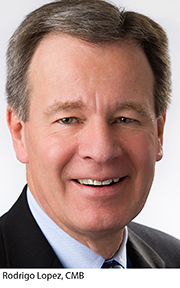
MBA Paper Outlines GSE Reform Principles, Guardrails
The Mortgage Bankers Association yesterday released a paper outlining its recommended approach for secondary mortgage market reform.
The paper, GSE Reform Principles and Guardrails (file:///C:/Users/msorohan/Downloads/16998_GSE_Reform_Principles_Report (1).pdf), calls for ending the conservatorship of Fannie Mae and Freddie Mac and establishing a new, durable foundation for the secondary mortgage market with explicit guarantees for mortgage-backed securities.
Specifically, the paper outlines a preferred end-state; principles that should be incorporated in any future system; key components and guardrails of the end-state; and emphasizes the need to ensure a smooth transition to a reformed secondary mortgage market.
The paper is derived from the work of the MBA Task Force for a Future Secondary Mortgage Market. The Task Force considered the benefits and drawbacks of many potential models in developing its recommendation. It concluded by reaffirming an end-state that would encourage multiple guarantors, which is consistent with MBA’s previous recommendations. The paper builds on the work of two previous MBA task forces, in 2009 and 2013, that laid the groundwork for this paper.
 Under the MBA proposal, guarantors would be organized as privately owned utilities with a regulated rate of return. Guarantors could purchase from a newly created insurance fund an explicit federal guarantee on a defined class of eligible securities. The guarantee would only be for the securities and not the entities issuing them. The entities would have a public purpose of providing sustainable credit availability to the conventional single-family and multifamily mortgage market and providing equitable access to lenders of all sizes and business models. To address underserved markets nationwide, the entities would be responsible for executing an affordable housing strategy to ensure broad access to credit.
Under the MBA proposal, guarantors would be organized as privately owned utilities with a regulated rate of return. Guarantors could purchase from a newly created insurance fund an explicit federal guarantee on a defined class of eligible securities. The guarantee would only be for the securities and not the entities issuing them. The entities would have a public purpose of providing sustainable credit availability to the conventional single-family and multifamily mortgage market and providing equitable access to lenders of all sizes and business models. To address underserved markets nationwide, the entities would be responsible for executing an affordable housing strategy to ensure broad access to credit.
“Today’s paper is intended to provide thoughtful recommendations on how to reform the GSEs while ensuring a healthy, robust secondary mortgage market emerges for both single-family and multifamily mortgages,” said MBA Chairman Rodrigo Lopez, CMB, Executive Chairman of NorthMarq Capital, Omaha, Neb. “The U.S. mortgage market requires global capital in order to maintain adequate liquidity through all economic cycles. International and institutional investors will only fill that role if there is an explicit government guarantee on the securities, something that can only be obtained by congressional action.”
Lopez said expanding to other guarantors would dilute the “duopoly” currently held by Fannie Mae and Freddie Mac and encourage more competition in the marketplace. He said the “guardrails” were designed to protect consumers and to avoid situations that led to the GSEs’ conservatorship in the first place. He also noted that the paper outlines protections for small and mid-sized lenders and establishes a “bright line” between the primary and secondary mortgage markets.
Lopez added it was imperative that Congress take action on GSE reform as quickly as possible. “There have been some significant administrative reforms achieved under the guidance of the Federal Housing Finance Agency,” he said, “but now these reforms have to be codified, and only Congress can do that. Congress is also the only body that can create the funding to ensure liquidity of the re-chartering of the GSEs and any other entities that might emerge from reform, as well as the Common Securitization Platform.”
“As a mid-size lender, it is critical to me that this paper addresses several key issues, namely that it ensures equal market access for lenders of all sizes and business models, and that it maintains a deep, liquid market for long-term financing options.” said Hank Cunningham, CMB, President of First Mortgage Company LLC, Greensboro, N.C., and a Task Force Member.
“This paper was developed with an eye toward serving the broadest range of housing options, and thus includes both single- and multifamily approaches for homeowners and renters,” said Mike May, Executive Managing Director and Vice Chairman of Berkeley Point Capital, Bethesda, Md., and a Task Force Member.
MBA President and CEO David Stevens, CMB, said the paper came together as an effort to meet two primary objectives: reforming the GSEs and ensuring a strong secondary mortgage market. “We’re proud of the work we’ve done; it’s very thoughtful,” he said. “The Task Force represents members who understand how the secondary market works and brought extraordinary industry acumen to the process.”
The Task Force consists of individuals from MBA member companies representing a broad cross-section of the residential and multifamily real estate finance industries, including entities of varying sizes and business models.
MBA will elaborate on all of these concepts in its full paper, anticipated in April, and will also include more detailed end-state reform recommendations including a comprehensive transition plan and affordable housing strategy. “This represents the schematic design of MBA’s approach to secondary market reform,” Lopez said.
Lopez also appears in an MBANow video to discuss the paper. The YouTube video can be accessed at https://www.youtube.com/watch?v=c6FoARYZ4B4&feature=em-uploademail.
